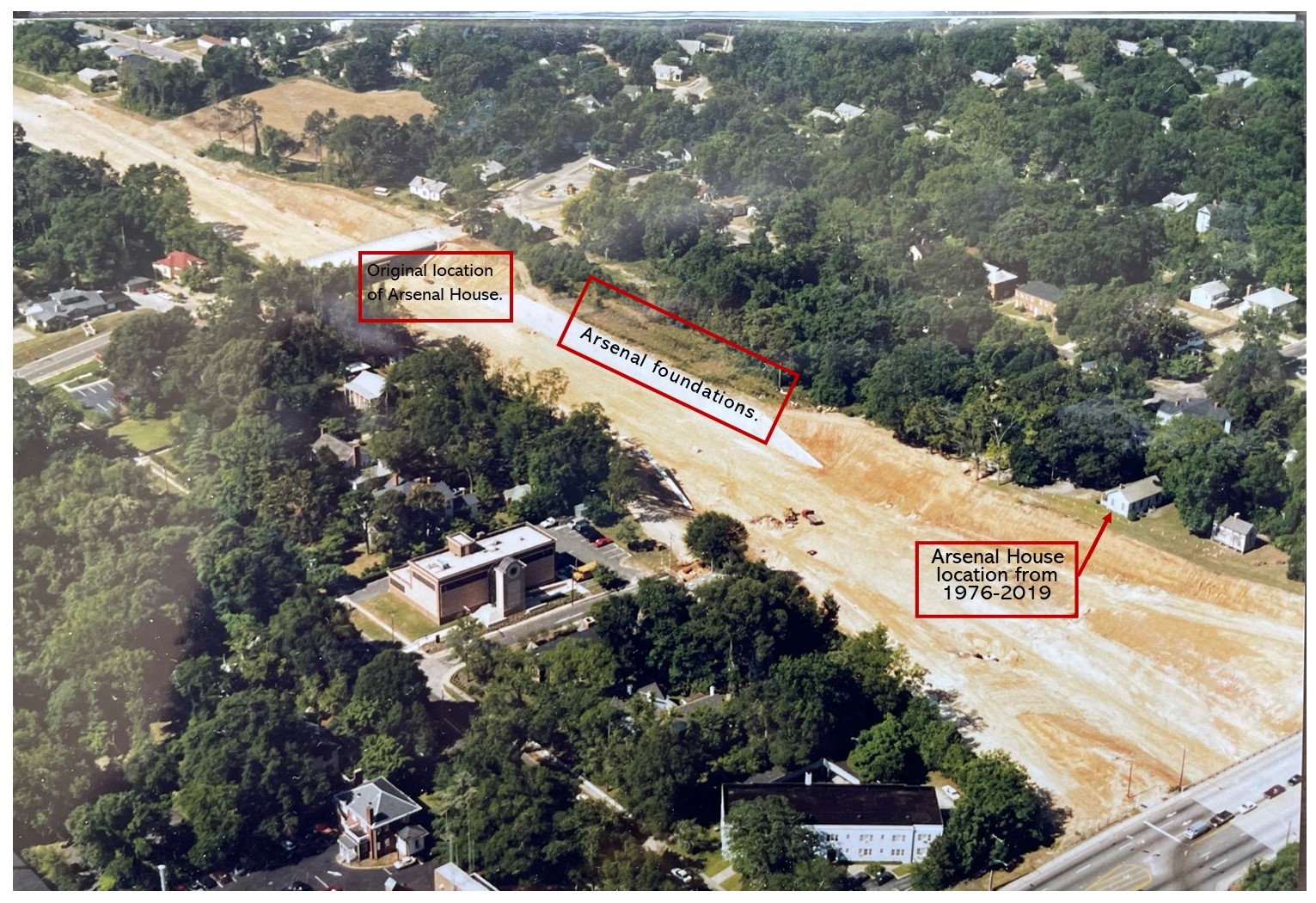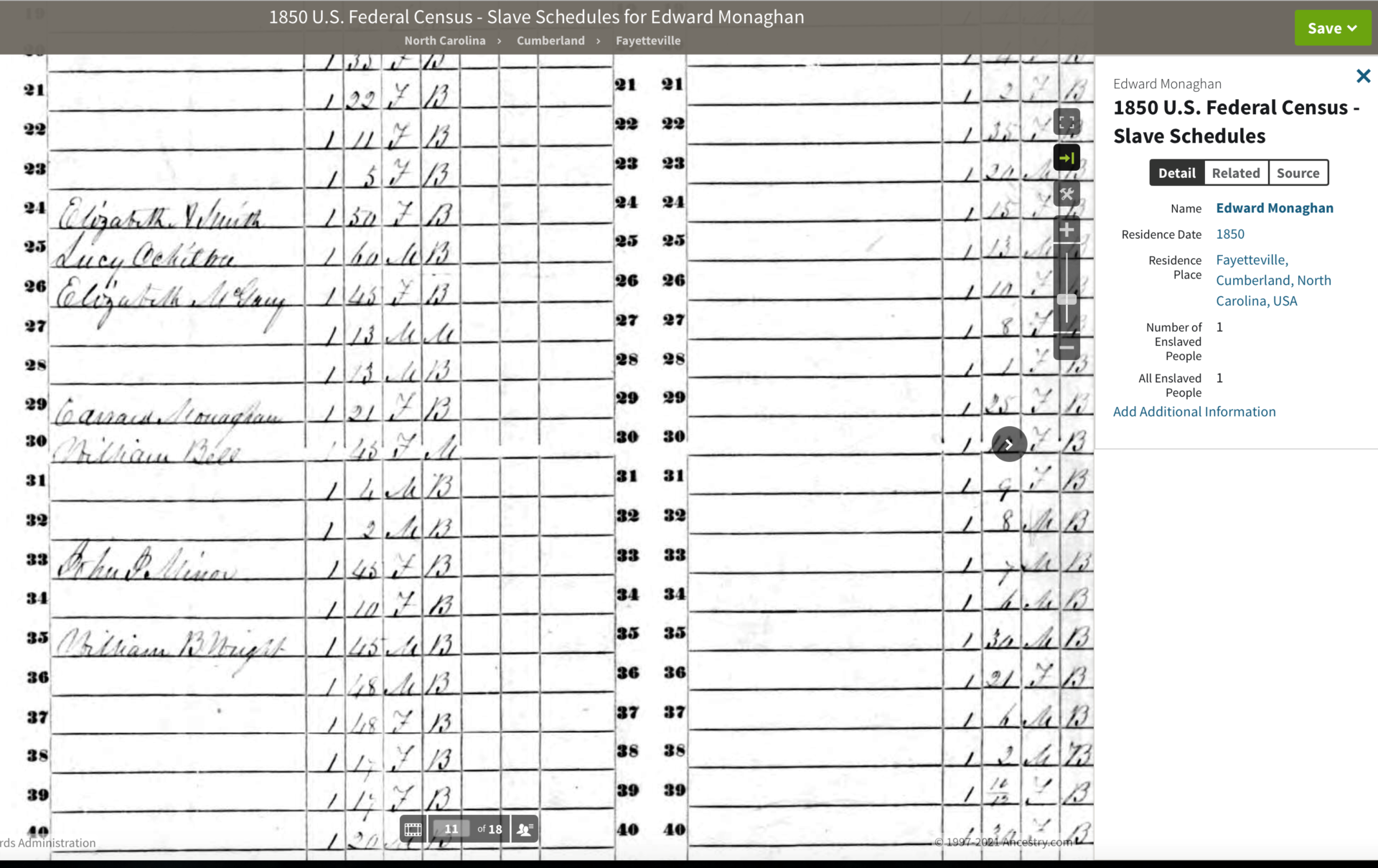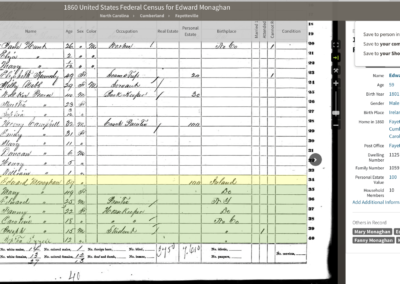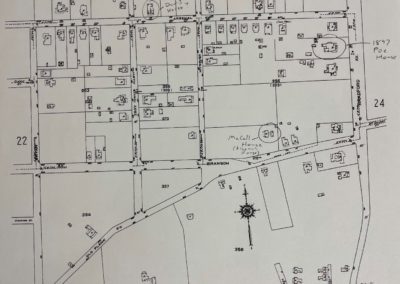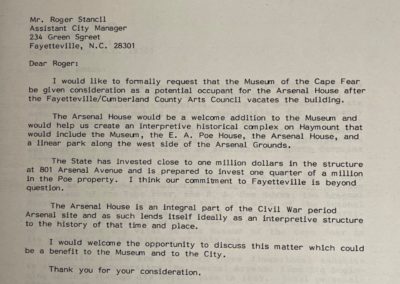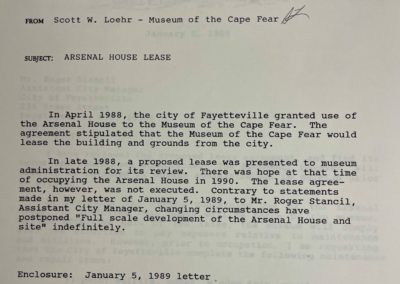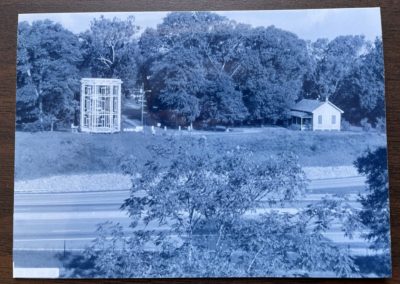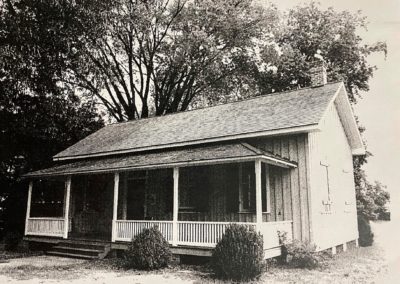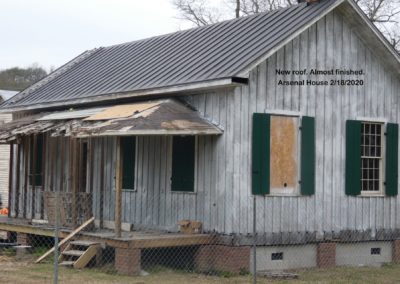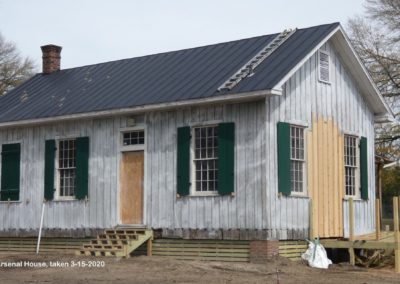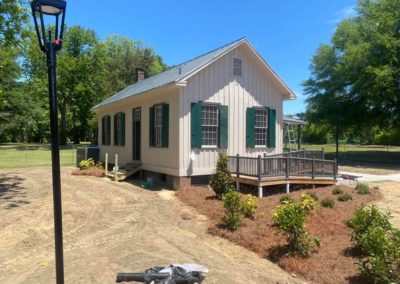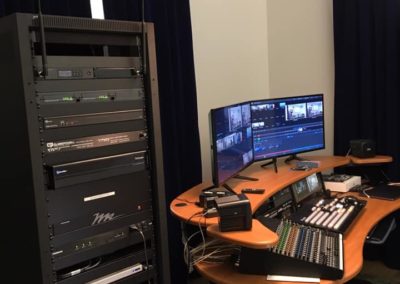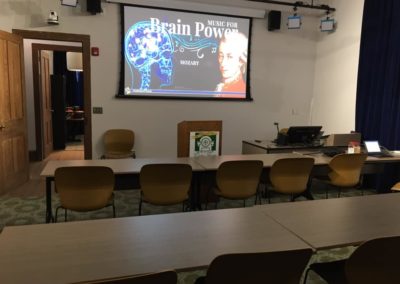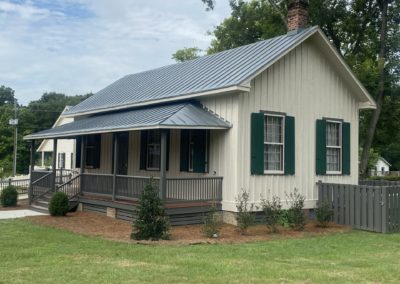Arsenal House – 1862
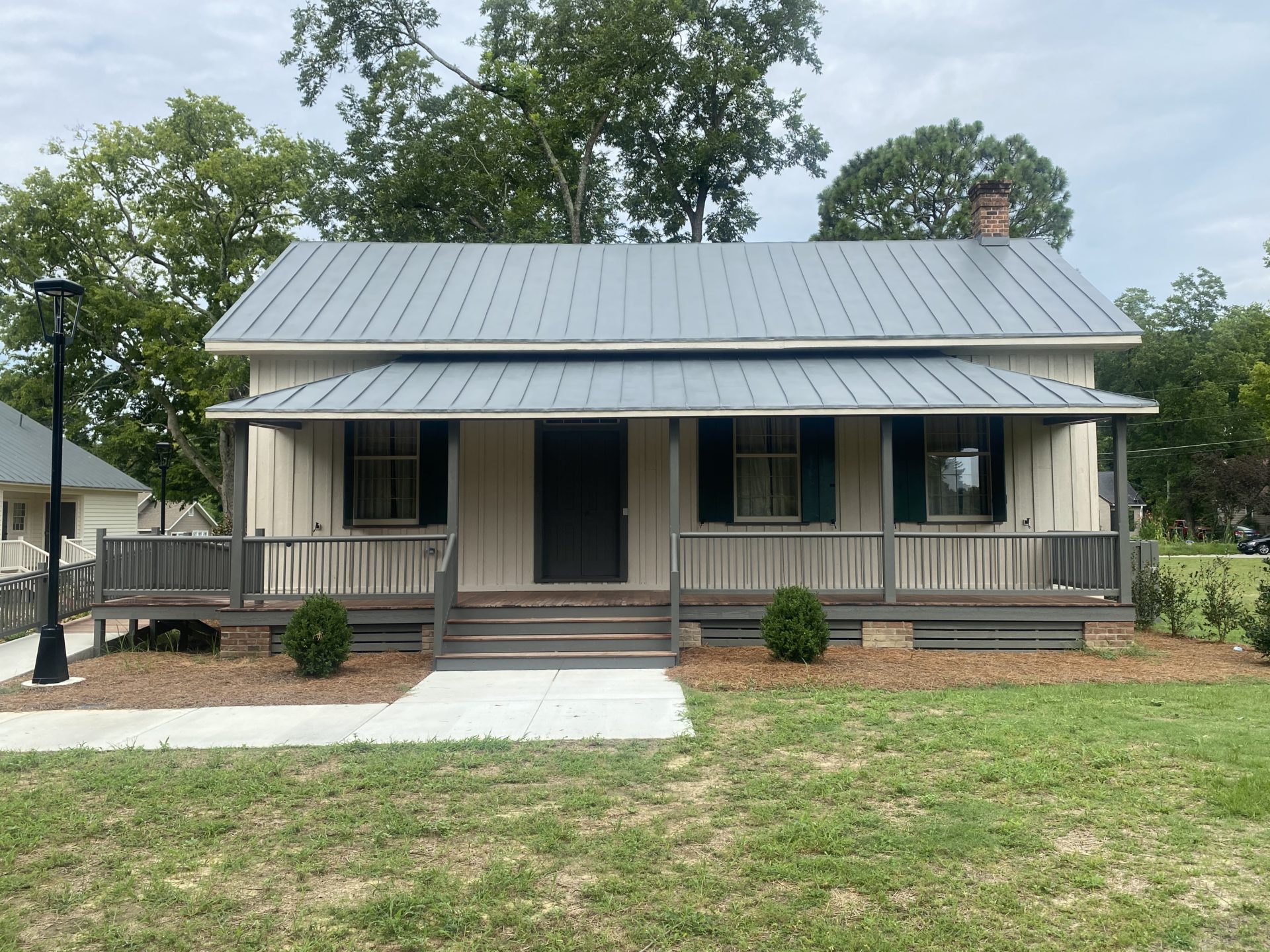
For decades, this building has been known as the Arsenal House. It is a surviving structure associated with the Fayetteville Arsenal. It survived the explosions, battering rams, and fires of the 1st Michigan Engineers that destroyed the rest of the facility from March 12 – 14, 1865.
The house survived due to an acquaintance between the resident, Edward Monaghan, and General Sherman. After Union soldiers looted his home, Monaghan complained to Union Major Samuel Byers and requested to see his old friend, William Sherman. Sherman and Monaghan met, and Byers documented what happened between the two, writing that there was “a ray of pleasure illuminating Sherman’s face.” However, Sherman’s mood changed toward Monaghan, with Sherman telling him: “You have betrayed it all: me, your friend, your country that educated you for its defense. You are here a traitor, and you ask me … to protect your property … I will not punish you; only go on your way.”¹ With the rest of the arsenal destroyed, this house, which dates to 1862, was built during the Confederate occupation and remains one of the few buildings in Fayetteville from the Civil War and Reconstruction eras.
Originally, the house stood just a few yards to the southeast at 818 Branson Street, where the Martin Luther King, Jr. Freeway is now. With the coming of the highway, the Arsenal House was moved in 1976 to the north end of this site, to the other side of Arsenal Avenue, and eventually became home to the local Arts Council until 1987. This one-story dwelling has one large room to the right of a central hallway and two smaller rooms to the left. Like all the houses in the VanStory History Village, the Arsenal House was moved in 2019 and restored in 2020 as part of Phase 1 development of the North Carolina Civil War & Reconstruction History Center.
The Arsenal House will be the heart of our digital education program for grades K-12. Consistent with the digital master plan, it houses a state-of-the-art distance learning studio/classroom with technology found in only the most advanced tech companies. Operating at full capacity, and with the approval of the North Carolina State Board of Education, it will deliver instruction to classrooms across the state. It also will have the capability to produce podcasts.
(Click the thumbnails below to enlarge the gallery images.)
____________
¹Samuel Hawkins Marshall Byers, “Fire and Sword,” The Neale Publishing Company; 1911, pp184-185.

